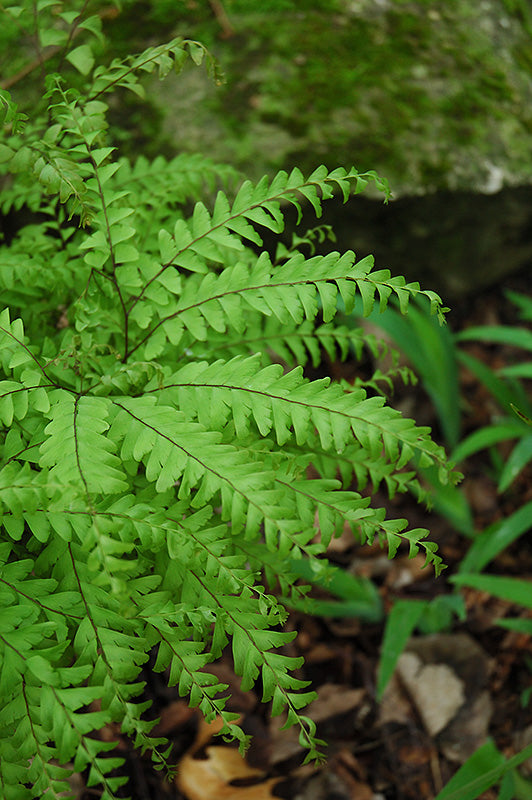Northern Maidenhair Fern will grow to be about 18 inches tall at maturity, with a spread of 24 inches. Its foliage tends to remain dense right to the ground, not requiring facer plants in front. It grows at a slow rate, and under ideal conditions can be expected to live for approximately 15 years. As an herbaceous perennial, this plant will usually die back to the crown each winter, and will regrow from the base each spring. Be careful not to disturb the crown in late winter when it may not be readily seen!
This plant does best in partial shade to shade. It prefers to grow in moist to wet soil, and will even tolerate some standing water. It is not particular as to soil pH, but grows best in rich soils. It is highly tolerant of urban pollution and will even thrive in inner city environments, and will benefit from being planted in a relatively sheltered location. Consider applying a thick mulch around the root zone over the growing season to conserve soil moisture. This species is native to parts of North America, and parts of it are known to be toxic to humans and animals, so care should be exercised in planting it around children and pets. It can be propagated by division.
Details
Botanical Name
Adiantum pedatum
Common Name
Northern Maidenhair Fern
Hardiness Zone
- 1
Appearance
Max Height
24 Inches
Max Spread
24 Inches
Plant Form
- Arching
Foliage Colour
- Green
Fall Colour
- Gold
Flower Colour
Edible
Edible Component
Edible Harvest Period
Edible Use
Fruit Colour
Growing
Flowering Period
Moisture
Moist To Wet
Sunlight
Partial Shade To Shade
Maintenance
Deer Resistance
Yes
Get more information about this plant and others with our comprehensive plant finder tool.




